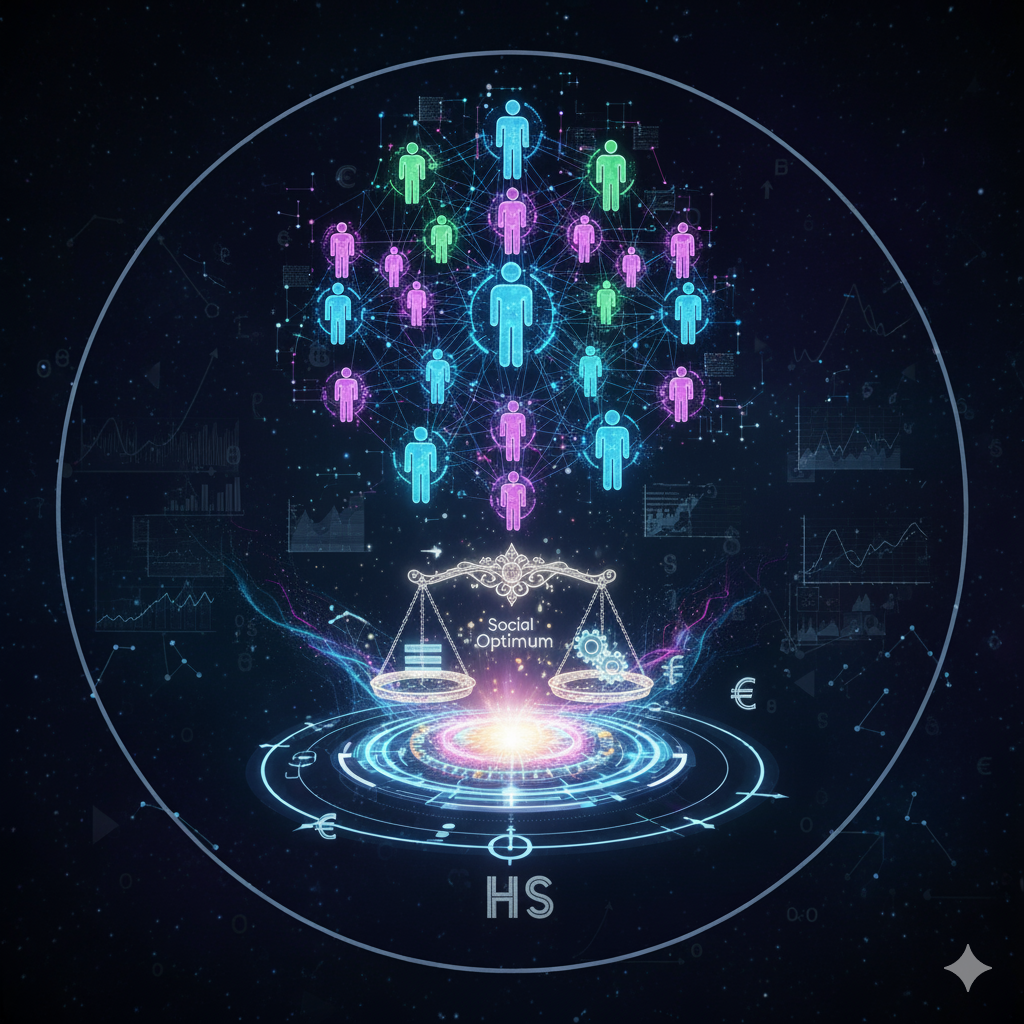Introduction
The National Institution for Transforming India, commonly known as NITI Aayog, is a policy think tank of the Indian government that was established on January 1, 2015, by Prime Minister Narendra Modi. NITI Aayog replaces the erstwhile Planning Commission, which had been in existence since 1950. The creation of NITI Aayog was a significant move towards fostering cooperative federalism and encouraging a more collaborative approach in policy-making, instead of the top-down approach followed by the Planning Commission.
This article will explore the objectives, composition, and significance of NITI Aayog, as well as its achievements since its inception.
Objectives of NITI Aayog
NITI Aayog was conceived to focus on the following key objectives:
- Fostering Cooperative Federalism: One of the core ideas behind NITI Aayog was to establish a platform for cooperative federalism. The Planning Commission was often seen as a central agency that dictated the development agenda to the states. NITI Aayog, on the other hand, emphasizes cooperation between the central government and states, ensuring that development is tailored to the specific needs of each state.
- Promotion of Sustainable Development: NITI Aayog aims to promote sustainable development by designing long-term policies for the country’s growth. This includes adopting strategies for growth that do not compromise environmental sustainability and social equity.
- Encouraging Innovation and Knowledge Sharing: The institution is tasked with fostering a culture of innovation across the country. By focusing on research, data-driven decision-making, and the application of technology, NITI Aayog helps develop policies that encourage creativity and resourcefulness in addressing India’s developmental challenges.
- Reforms in Governance and Policy: NITI Aayog is an advocate for reforms in governance. It works towards improving the efficiency of government schemes and ensuring transparency and accountability. The organization also seeks to integrate new policies based on evidence, enhancing the effectiveness of programs at all levels of governance.
- Formulation of Strategic and Long-Term Policies: NITI Aayog focuses on formulating strategic, long-term plans for economic development. This involves both immediate interventions and preparing a roadmap for India’s future. It provides a critical platform for discussing major national projects and strategies for socio-economic development.
- Encouraging Private Sector Participation: Recognizing the importance of the private sector in India’s economic growth, NITI Aayog also aims to create an environment that encourages the participation of private enterprises in various sectors, particularly those related to infrastructure, technology, and research.
- Monitoring and Evaluation: NITI Aayog also plays a significant role in monitoring and evaluating government policies and programs. By assessing the progress of various initiatives, it ensures that the policies are implemented effectively and achieve the desired results.
Composition of NITI Aayog
NITI Aayog comprises several important members and positions that contribute to its functioning. These include:
- Prime Minister as the Chairperson: The Prime Minister of India serves as the Chairperson of NITI Aayog. This reflects the importance of the institution at the highest level of governance and underscores its central role in policy formulation.
- Vice-Chairperson: NITI Aayog has a Vice-Chairperson, who is appointed by the Prime Minister. The Vice-Chairperson leads the functioning of NITI Aayog on a day-to-day basis and works closely with various teams to achieve the goals outlined by the Aayog.
- Full-Time Members: NITI Aayog has a set of full-time members, typically domain experts and senior government officials. These members are specialists in various sectors like economics, social development, infrastructure, health, and education, among others. They are responsible for offering expertise, proposing strategies, and contributing to the formulation of policies.
- Special Advisors: NITI Aayog also works with special advisors and experts who provide insights on specific issues related to national and international development. These advisors are appointed on a short-term or long-term basis, depending on the specific requirements.
- Chief Executive Officer (CEO): The CEO of NITI Aayog plays a crucial role in the day-to-day management and operational aspects of the institution. The CEO oversees the implementation of various initiatives and ensures the coordination between different government departments and agencies.
- Governing Council: The Governing Council of NITI Aayog includes the Chief Ministers of all states and Union Territories. This is one of the distinctive features of NITI Aayog, which ensures that the development process is inclusive and that the states play an integral role in policy decisions.
- Regional Councils: NITI Aayog also has several regional councils, each led by the Prime Minister and comprising the Chief Ministers of the respective regions. These councils facilitate dialogue and address the specific development challenges faced by different regions.
- Advisory and Expert Committees: In addition to the main members, NITI Aayog regularly engages with advisory and expert committees in different fields. These committees provide sectoral knowledge and insights to help design more targeted interventions.
Significance of NITI Aayog
The establishment of NITI Aayog marked a significant departure from the previous system of centralized planning. Some key aspects of its significance include:
- A Paradigm Shift in Governance: NITI Aayog marks a shift from the traditional centralized planning model to a more decentralized and cooperative governance structure. This move has empowered state governments, enabling them to play an active role in the development process.
- Cooperative Federalism: The adoption of cooperative federalism ensures that the priorities and needs of states are incorporated into national policy decisions. This model fosters a more equitable distribution of resources and development opportunities across the country.
- Evidence-Based Policy Making: NITI Aayog emphasizes data-driven decision-making. By incorporating modern techniques like big data analytics and artificial intelligence, it supports the creation of policies that are based on concrete evidence rather than assumptions or past models.
- Empowering States and Union Territories: Through the Governing Council, the institution provides a platform for state leaders to discuss their concerns, propose solutions, and contribute to policy decisions that affect their regions. This promotes a sense of ownership and ensures that policies are well-tailored to local needs.
- Encouraging Innovation and Research: NITI Aayog has significantly contributed to India’s innovation landscape. By fostering partnerships with global think tanks, educational institutions, and research organizations, it has ensured the promotion of new ideas and solutions in governance and public policy.
Achievements of NITI Aayog
Since its formation, NITI Aayog has achieved several milestones. Some of its notable contributions include:
- Atal Innovation Mission (AIM): NITI Aayog launched the Atal Innovation Mission to foster innovation and entrepreneurship across India. The mission focuses on creating an ecosystem that encourages young innovators and provides them with the resources to turn their ideas into reality. AIM has been pivotal in the establishment of Atal Tinkering Labs (ATLs) and Atal Incubation Centers (AICs).
- SDG India Index: NITI Aayog developed the Sustainable Development Goals (SDG) India Index to measure the performance of states and Union Territories in achieving the SDGs set by the United Nations. This index helps monitor the progress towards sustainable development and encourages states to work towards achieving these global targets.
- National Strategy for Artificial Intelligence (AI): NITI Aayog formulated India’s National Strategy for Artificial Intelligence to position the country as a leader in AI. This strategy aims to leverage AI for national growth, focusing on sectors like healthcare, education, agriculture, and infrastructure.
- Aspiration Districts Program: NITI Aayog launched the Aspirational Districts Program to address disparities in the development of underdeveloped districts. By focusing on key indicators like health, education, and income, the program aims to improve the quality of life for citizens in these regions.
- Make in India and Digital India: NITI Aayog has supported the implementation of flagship initiatives like Make in India and Digital India. These programs are intended to boost manufacturing and digital connectivity in the country, leading to economic growth and job creation.
- Transforming Rural India: Through initiatives such as the ‘Rural Development Partnership’, NITI Aayog has worked towards improving the livelihoods of rural communities, fostering rural entrepreneurship, and creating sustainable development models for rural India.
- National Nutrition Strategy: NITI Aayog also played a key role in the creation of the National Nutrition Strategy, which aims to address malnutrition, stunting, and undernutrition in the country, especially among women and children.
Conclusion
In conclusion, NITI Aayog has emerged as a key player in India’s governance framework, steering the country towards more collaborative, evidence-based, and innovative approaches to development. By prioritizing the needs of states, fostering innovation, and ensuring sustainable and inclusive development, NITI Aayog is playing a pivotal role in shaping India’s future. Its achievements, particularly in the areas of innovation, sustainable development, and social equity, position India well for a brighter and more equitable future.




